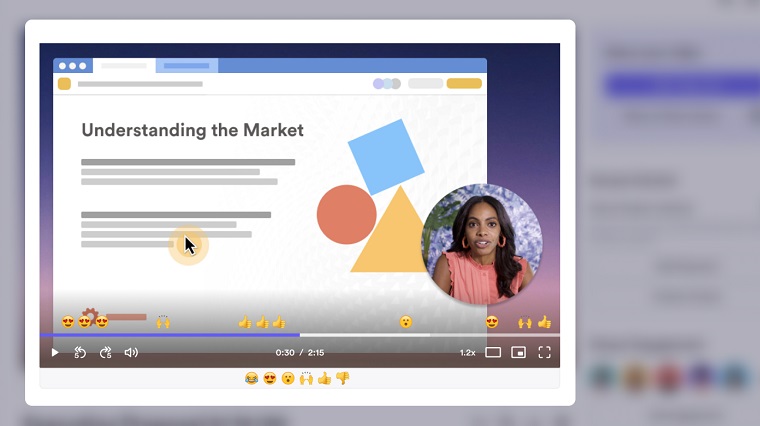Are you looking to create an online course? Creating a course can be a great way to make money from your knowledge, expertise, and passions.
But there are some important things you need to know about how to create an online course before you can get started, including pitfalls to avoid.
Whether you’re a beginner or an experienced instructor, there are certain steps you need to take to ensure your success in online education.
We understand the doubts and uncertainties that come with creating an online course. But here’s the thing — every successful educator started somewhere, and we’re here to light the way for you.
The idea of structuring your knowledge into a cohesive course might seem overwhelming, but trust us, it’s a rewarding adventure.
Feeling unsure about your tech skills? Don’t worry, you don’t need to be a tech genius to create an effective online course.
Perhaps you’re concerned about standing out in a sea of online courses. It’s true, the digital learning landscape is bustling. But remember, your unique perspective and teaching style are your secret weapons, and you can definitely create a standout experience that learners will flock to.
And if the thought of marketing your course feels like an insurmountable challenge, breathe easy. Our guide below will provide you with actionable marketing strategies that won’t drain your energy or budget.
By the end of this guide, you’ll have the tools and confidence to craft an online course that not only resonates with learners but also fulfills your teaching aspirations.
Let’s get started with 10 essential tips for creating and launching your own online course!
Disclosure: Some of the links in this article are affiliate links, meaning at no additional cost for you, we might get a commission if you click the link and purchase.
10 Steps for Creating Online Courses
Here’s the step-by-step blueprint that will show you exactly how to create an online course that sells…
1. Determine the topic of your course
The first step in creating an online course is to determine the topic of your course.
This is arguably the most difficult part, but it’s also the most important.
You have to make sure you get this right or else you’ll waste a lot of time, effort, and money chasing the wrong course idea.
Some questions you can ask yourself to help generate online course ideas include:
What are you an expert in?
Take an honest look at your credentials and experience. After all, if you create an online course in an area you don’t truly have any authority in, you’ll have a hard time getting people to sign up.
What are people most interested in learning?
You want to actually create something your audience will want or need.
Take some time and do a little market research.
Find out what kind of topics are trending right now, then create online learning content around those subjects. If possible, avoid covering anything that might not be relevant next year (or even next month).
Is there enough demand for this topic on Google?
Type your topic into the search engine and see if it shows lots of results from other sites like Quora or Reddit where users have asked questions about the subject you’re considering creating a course about.
If so, this could mean there is an existing need for a course and a target audience to market to.
You should also use a good SEO tool (like Ahrefs, SurferSEO, or even Google Trends) to further help you determine whether or not there is enough demand for your online class.
What are people asking you for advice on?
Oftentimes, what people need help with is also what they’re most interested in learning. If you can tap into this, you’ll be able to create a course that’s both helpful and popular.
What are your hobbies or passions?
We all have things we’re passionate about outside of work. Why not share your knowledge and enthusiasm by creating an online course around it?
What do you enjoy teaching?
Make sure the material in your course is actually interesting and enjoyable for you to teach. This will help keep you motivated throughout the entire process!
2. See if there’s a market for your course

We touched on it above, but it’s important to make sure there’s actually a target audience out there who are interested in your online course idea.
You don’t want to get too far down the course creation path — putting in hours of blood, sweat, and tears — only to find out there’s nobody out there interested in the topic when you start trying to market your course.
Do some online research to see if there is a demand for your course topic.
Try typing your topic into Google followed by the words “online course.”
If there are already a lot of results, this is a good indication there’s a target audience out there looking for online learning information on this subject.
You can also search for courses on your subject on popular learning sites like Coursera. This will give you an idea of the competition you’ll be facing and what people are currently paying for courses on this topic.
And by the way, don’t be scared away by the fact that there are other online courses covering your topic.
That’s a good thing! It means there’s demand and interest in the subject. Your job will be to create a better online course that surpasses what’s being offered out there and to do a better job marketing your course to your target audience.
You can also use tools like Google Trends or Ahrefs to get further insights into whether or not people are searching for information on your topic.
3. Establish your credibility as an expert on the course subject
One of the best ways to create an online course that sells is to establish yourself as an expert on the topic.
People want to learn from those who know what they’re talking about, so make sure you can back up your claims.
There are a few things you can do to make sure potential students know you’re an authority in the field:
Writing blog posts about the topic, getting active on social media talking about the topic, guest posting on other websites, and getting quoted in the media (HelpAReporter is a great place to become a source for journalists are just a few ways to establish your subject matter expertise.
There are a few other ways to establish your subject matter expertise:
- Speak at conferences or webinars on the topic
- Write an ebook or whitepaper on the topic
- Create video tutorials or lessons on the topic (think of these as a teaser for your course)
The point is that people have to see you as a real expert in the field before they’ll actually fork over their money to pay for your online course.
4. Create an online course outline
You’ve put in the hours of research and now know there is demand for your course topic…now what?
Now it’s time to start creating content for your online course! This process will likely take quite some time, but with a good course outline, you’ll have a strong direction that will help you create a cohesive, successful online course.
When you create your entire course outline, make sure to include:
- A description of what students will learn in the course.
- What topics will be covered in each lesson?
- What are the key takeaways from each lesson?
- The format of your course (video, audio, text)
- Visuals and supplementary content you’ll create to support each lesson.
These questions will help you create a clear outline that’s easy to follow as you create your online course lessons.
5. Create & edit your course materials
When creating your online course, it’s important to make sure you’re delivering high-quality content that will engage and educate your students while meeting your learning objectives.
This means taking the time to create engaging training video lessons (check out our guide on the ideal online course length for videos), helpful slides, and well-written text lessons.
And don’t forget the all-important supplementary content like charts, graphs, images, and videos.
All of this content needs to be well organized and easy to follow for students. Using eLearning templates can help with this.
And remember, you also have to make sure the content you’re creating is better than what’s being offered in other competing courses in your niche. Online course platforms like TrainerCentral, Teachable, and Thinkific make it really easy to build a course that stands out.
This is where having a great course outline will come in handy. It will guide you in creating a lesson plan for each topic you’ll cover in your course.
A lesson plan will help you stay on track while creating your course materials and will also help students better understand what they’re learning.
You’ll also want to script out your video lectures so that you can deliver the course content in a clear, effective manner. You don’t have to script out every single word and read it like a robot, but you do want to have a pretty solid script outline with bullet points and cues for each lesson so that you stay on track and don’t ramble.
And of course, you then have to actually shoot the videos for your course.
The good news is you don’t have to spend a lot of money to create good videos for your courses.
Your best bet is to simply use a screen recording app like Loom that will let you insert a speaker bubble/talking head into your videos so students can see you teaching the lessons.
Loom is free to use (paid plans are also available depending on how much content you’re creating) and will let you create quality video content for your online courses.
The other thing you want to remember as you create each lesson plan and script out your course materials is that less is more! You don’t want to create something that will overwhelm students or feel like a burden to get through.
Microlessons can be very effective in keeping students engaged in your online course.
Remember, these are busy people who have jobs and families too…you want them to actually be able to complete the course in an efficient manner that doesn’t take up their entire lives (or at least makes it seem like it does).
6. Choose the right platform
When it comes to creating an online course, you need to select the right platform.
There are several online course platforms to choose from, each with its own set of perks and drawbacks.
One option is to use online course marketplaces like Udemy, Coursera, or Skillshare where you can upload your course and sell it through their website.
In our opinion, a better option for selling your course is to use a dedicated online course platform like TrainerCentral, Thinkific, or Teachable for creating, marketing, and selling your course.
 TrainerCentral: An all-in-one training platform
TrainerCentral: An all-in-one training platform
With TrainerCentral, you can turn your passion and knowledge into a thriving business. This comprehensive platform allows you to easily create and manage online courses in just minutes.
An online course platform like those mentioned above will let you create a course website and serve your course content for you.
This kind of course platform or learning management system will also give you more control over the look and feel of your course site, as well as how students interact with the content.
If you’re going to be selling your courses yourself, you also want to make sure you have the right LMS hosting in place to guarantee your online learning platform runs the way it should. Cloudways offers reliable LMS hosting, which includes advanced performance, scalability, and security along with no downtime.
 Cloudways - Managed Cloud Hosting Platform Simplified
Cloudways - Managed Cloud Hosting Platform Simplified
Save time and money with the most reliable cloud hosting trusted by 80,000+ agencies, developers, and businesses that required the highest performance from their websites!
There are pros and cons to using both options to sell online courses, so it’s important to decide which is best for you and your course.
Each platform has its own pricing model. Some platforms charge a monthly fee, while others take a percentage of each sale. You can see our TrainerCentral review for more info on their features and fee structure.
Some platforms also have restrictions on the type of content you can create or the number of students you can have in your course.
Make sure to read the fine print before selecting a course creation platform so you know what to expect.
7. Market your course
Once you’ve created a great online course, it’s time to start marketing it!
Marketing online courses is its own science.
The quality of the marketing is the difference between profitable online courses and courses that lose money.
There are a number of ways you can market your course, but some methods will work better than others depending on your course topic and audience.
One way to market your course is to create a landing page for it. A landing page is a web page where potential students can learn more about your course and sign up for it.
You can create a landing page using an online course platform like TrainerCentral — no coding or design experience needed.
The key is to make sure your landing page is well designed (use templates!) and contains all the information potential students need to make a decision about whether or not to enroll in your course.
If you have an email list, be sure to send out an announcement that you’ve created a new online course and share the link to the landing page so people can sign up!
You’ll also want to launch a social media ad campaign around your course where you point people to your sales page.
Make sure you’re using all of these marketing methods consistently as well – don’t just create a single post or ad and forget about it.
For example, if you create an ad, try boosting it with more budget over time so more people see it in their newsfeeds or search results (depending on where they are).
And remember: Don’t spam…send content regularly but not too often!
8. Get feedback from students
One of the best ways to improve your online course is to get feedback from students who take it.
Ask them what they liked and didn’t like about the course, what was confusing, and what could be improved.
You can ask for feedback in a number of ways, such as through surveys, interviews, or focus groups.
If you’re using an online course platform or LMS, they offer built-in tools to help you collect feedback from students.
Make sure to use this feedback to improve your course and make it even better for the next group of students who enroll!
This feedback will also help guide you as you create other online courses in the future!
Remember, you don’t have to create a perfect course right away.
It’s OK if your first few courses aren’t great. Just keep creating and improving as you go along!
9. Build a community of loyal students
One way to create a successful online course is to create a community of loyal students.
What does this mean, exactly?
Well, it means doing everything you can to make sure your students feel supported and connected to each other and to you.
This could include things like creating a private Facebook group for your students, scheduling regular live Q&A sessions, or providing personal feedback on student work.
The key is to create a sense of community and connectedness among your students. This will help them feel supported and encourage them to keep coming back to your course.
Make sure you create a system where they can easily connect with one another (and you!) so they can get the most out of your course!
You might even want to create an affiliate program that gives students a chance to promote your online course in their network and gives them a commission whenever they get someone else to enroll.
This is a great way to create more buzz around your awesome online course and make it even more successful!
In addition, create an alumni group for former students who have completed your course so they can continue sharing their experiences with each other as well as new applicants. This will help create even stronger ties within the community that you’ve built up over time!
10. Update your course over time to keep it fresh and current
As your online course ages, it will naturally become less relevant and accurate. This is why it’s important to update your course regularly over time to keep it as current as possible.
This could mean adding new content, revising old content, or even removing content that’s no longer applicable.
Make sure you constantly review your course material and make the necessary changes to keep it fresh and up-to-date!
You may also want to consider conducting surveys or interviews with students to get feedback on what they’d like to see added or revised.
This feedback will help you create successful online courses your students will love.
FAQ on Creating Online Courses
What is an online course?
An online course is a type of course that can be taken over the internet. They can vary in length and comprehensiveness.
Online courses can be taken for credit or for professional development.
What are the best platforms for creating an online course?
There are a number of platforms that allow you to create online courses. Some popular ones include TrainerCentral, Thinkific, and Teachable. All of these platforms offer a wide range of features and options to help you create a successful course. They also have built-in tools to help you collect feedback from your students.
How much does it cost to create an online course?
Creating an online course can be a great way to make some extra money. However, there are costs associated with online course creation.
You can drastically cut costs on the production side by creating the materials yourself rather than hiring out to do it. Using free or cheap video presentation tools like Loom can allow you to create your course videos at almost no cost.
On the selling side, some online course platforms charge a commission on every sale. Others have monthly fees.
However, if you’re willing to put in the time and effort, creating an online course can be a very lucrative endeavor. Just make sure you do your research and choose a platform that fits your needs and budget!
Can you really make money creating online courses?
Creating and selling online courses can be a lucrative endeavor. There are tons of entrepreneurs making money right now with an online course business.
You can sell an online course for anywhere from $100 to $1,000 or more. The price of your course will depend on the topic, the length of the course, and the level of detail involved.
However, it’s important to do your research and choose a subject for your online course that has student interest, and use the right platform that fits your needs and budget.
How much should you sell your online course for?
To make a profitable course, it’s important to consider a few factors.
The first is the amount of work and time you put into creating the course. If you create a high-quality, comprehensive course, it’s understandable that you would want to price it accordingly.
Another factor to consider is the level of interest in the topic of your course. If there are a lot of people searching for information on the topic, you can be sure that there will be demand for your course. This also means that you can price your course higher and still find buyers.
Finally, you’ll also want to consider your target market when setting the price for your online course. If you’re targeting professionals, you can charge more than if you’re targeting students or hobbyists.
In general, you should probably price your online course somewhere between $100 and $500. But again, this depends on the factors mentioned above. So do your research and find a price that’s right for you!
How much time does online course creation take?
It typically takes a lot of time and effort to create an online course, especially your first time. The course creation process could easily take 100 hours or more, This is because online courses need to be well constructed and well organized in order to be successful.
You’ll need to create a curriculum that covers all the topics you want to discuss, and make sure it’s engaging and interesting for your students.
You’ll also need to create all the accompanying materials for your online course, like videos, slideshows, quizzes, and assignments.
Then, you’ll need to market your online course and create a landing page that encourages people to sign up.
Finally, you’ll need to track student progress and provide feedback.
All of this requires a lot of time and effort!
How should I name my online courses?
When creating an online course, it’s important to choose a name that is both accurate and memorable. This name will be the first thing potential students see, so it’s important to make a good first impression.
Some things to keep in mind when choosing a course name are:
- The name should accurately reflect the content of the course material.
- It should be easy to remember and spell correctly.
- It should be unique and stand out from other courses on the same topic (think: marketable!).
When brainstorming names for your online course, it can be helpful to come up with a list of keywords that describe the content of your course. From there, you can start narrowing down your options.
What are some mistakes to avoid when creating online courses?
It’s important to keep in mind some common mistakes that can be made when creating online courses.
1. Not spending enough time on planning and preparation. This is one of the most common mistakes, and it can lead to a number of problems down the road. Make sure you take the time to create a detailed plan for your course and map out all the topics you want to cover.
2. Not creating engaging content. If your course is boring, students will lose interest quickly. Be sure to make your content interesting and engaging, and use multimedia tools like videos and slideshows to keep students engaged.
3. Not focusing on student needs. Make sure you always keep your students in mind when creating your course. What do they want to learn? How can you create a curriculum that will help them achieve their goals?
A Final Word on How to Create an Online Course
Creating a successful online course takes a lot of hard work, but it’s definitely doable if you follow these essential tips.
Just remember to be patient and keep improving as you go along. Success most likely won’t come overnight, but if you keep working at it, you could build an online course that makes real money.
To make the process as easy as possible, we highly recommend using an online course platform like TrainerCentral. Its easy-to-use, powerful Course Builder offers an array of features, making it easy to create high-quality courses and build a thriving online business.
Have any questions about how to create an online course? Leave us a comment below and we’ll be happy to help!






